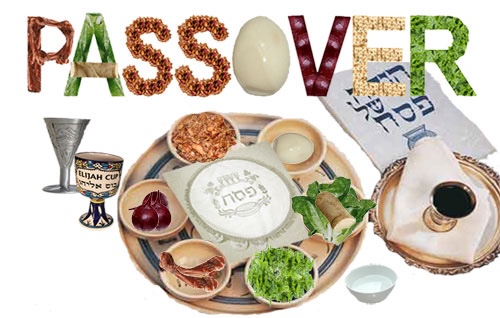Why am I pushing out a blog post on preparing for Passover the week after an incredible Célébration de la Semaine de la Francophonie, with Passover still more than a week away?
Each year, I get inspired to help families elevate their seder experience—oftentimes just a bit too late for them to do anything with it. So this year, I’m giving you enough runway to actually make use of these ideas—especially if you’re taking on seder leadership for the first time, or the first time in a long time.
This year is different in so many ways.
It’s the second Passover / פסח since October 7th, and although we carry the weight of that day with us, I’ve also witnessed, within our school and community, an incredible resilience. There’s still heaviness, yes, but there’s also hope. And for me personally, this will be my eighth and final Passover blog post as Head of OJCS—a role and a community that has shaped my leadership and my soul in ways that will echo far beyond Ottawa.
But let’s get down to business.
Each year, I share a “Top Ten” in service of helping people plan for seder—not just logistically, but spiritually and emotionally. Whether you’re hosting, helping, or Zoom-ing in, let’s make this year’s seder something that nourishes more than just our bellies.
Jon’s Annually-Revised (and Final?) Top Ten Suggestions for a Meaningful Passover
- Tell the Story (Really).
The mitzvah of the night is sippur yetziat Mitzrayim—telling the story of our exodus. Not just reading from the Haggadah, but telling it. Make it personal, make it interactive, make it real. Bonus points if you connect it to the personal or collective redemptions of this past year. Ask: What does freedom mean to us today? - Sing Like No One is Zooming.
Whether you’re into the classics or love a good parody song like
this Les Misérables Passover Parody, music makes the night come alive. Don’t be afraid to sing loud, even if it’s off-key. (Especially if it’s off-key.) - One Haggadah to Rule Them All?
Choose one Haggadah to anchor your seder, but don’t shy away from bringing in others for commentary or variety. Need something fast and free? Try something from Haggadot.com’s free Haggadah library. Just don’t let mismatched page numbers derail the vibe. - Karpas of Substance.
Don’t let hungry guests hijack your seder. Upgrade your karpas / כרפס. Think potatoes, salads, or anything veggie-based that tides folks over. Especially helpful when candle-lighting is late or kids are melting down. (Gefilte fish before the seder = 💡) - Assign Parts, Not Just Seats.
Give your guests some homework! Have someone prepare a skit, a midrash, a plague-themed costume—whatever works. The seder is supposed to be חווייתי—experiential. Invite creativity and joy at every age and stage. - Know Thy Guests.
Tailor the seder to who’s there. Kids? Keep it moving. Newbies? Be ready to explain. Tech-savvy relatives joining by Zoom (depending on observance levels)? Do a test run. Your guests will take it seriously if you do. - Bring the Fun.
Try Jewpardy, plague charades, or “Who Wants to Be an Egyptian Millionaire?” For more interactive families, try tech-friendly tools like Kahoot (again observance levels permitting). Make space for laughter—it’s part of the liberation. - Ask Better Questions.Move beyond the Four. My annual Fifth Questions include:
- Jewish Educator: What have I learned from the seder that I can apply in the classroom?
- Israel Advocate: How do I say “Next year in Jerusalem / לשנה הבאה בירושלים” with both hope and honesty?
- Parent: What new conversations do I need to have with my children about trauma, resilience, and Jewish pride?
- Community Leader: How do I hold space for joy and celebration even when we are still healing?
- What will your fifth question be?
- Start a New Tradition.
Add something new: A family story. A prayer circle. A moment of silence. A round of gratitude. Ask each person to pour into Elijah’s Cup and share a hope for the year ahead. - Prep with Purpose.
Whatever you’re bringing to the table—brisket, commentary, or comedic timing—preparation matters. OJCS families: lean on your kids! Let them share what they’ve learned. You paid for it—get your return on investment!
Wishing you and your family an early חג כשר ושמח.
Wishing our students and families a joyous Model Seder Season.
Wishing myself…a little extra gratitude for the privilege of sharing this space, this tradition, and this moment with you, one last time.
What will you do to make this year different from all other years?
Let me know in the comments or shoot me an email.

And for OJCS Parents…we hope you are looking forward to this year’s Model Seders and other Passover Activities before we hit the Passover Break!

